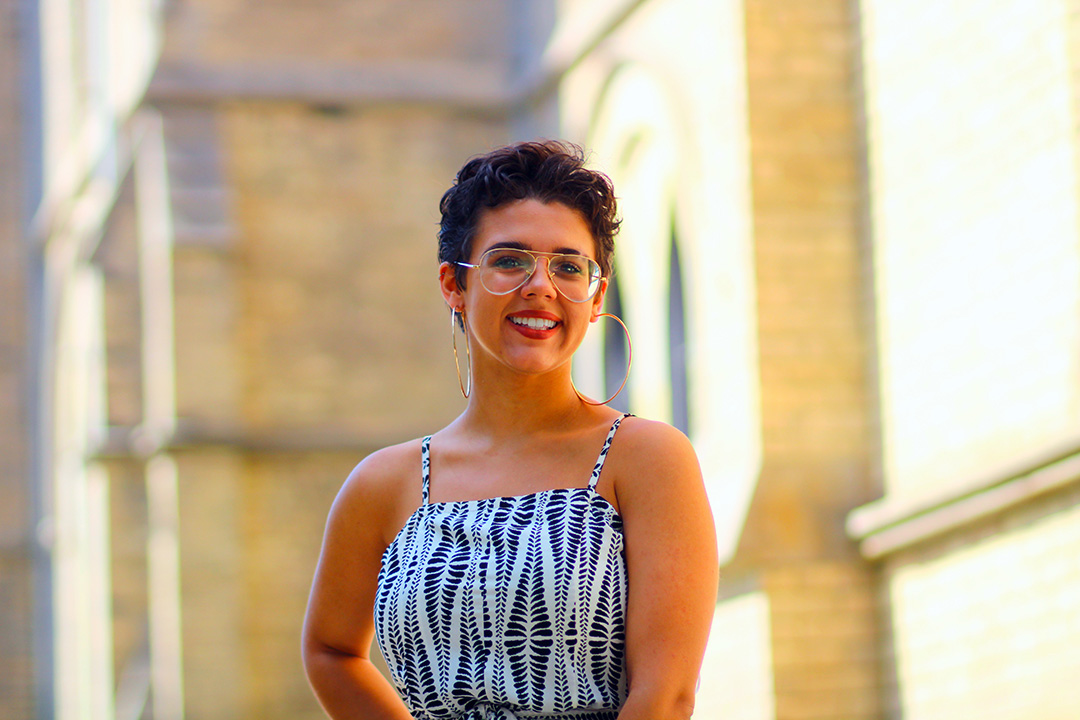In her recently published paper, Catherine Economopoulos, an architecture student at U of T’s School of Cities, writes about integrating Indigenous sustainability practices in modern approaches to green cities.
“For over 20,000 years, cultures thrived in tandem with the natural world that hosted and protected them,” she writes. “In just 400 more, settlers have desecrated those places, now unrecognizable, and brought countless communities to their knees.”
The paper questions why so much importance is placed on innovation in the search for sustainable practices, given the existence of so many traditional strategies that have already proven to be successful. Economopoulos highlights the importance of education, particularly in regard to Indigenous sustainability practices, as well as the goal of reciprocity with our environment at large.
A perspective shift
In an email to The Varsity, Economopoulos discussed the perspective shifts society needs in order to make education about Indigenous sustainability practices effective, including moving away from a capitalist mindset.
“To preach the capabilities of a new education, one must be open to being re-educated themselves,” Economopoulos wrote. “Unlearning subconscious bias is crucial in this process, which I discovered again and again [while interviewing members of Indigenous communities].”
Her paper expresses the ignorance deeply rooted in our education systems that instills close-mindedness in students that must be removed before diverse ideas are able to resonate with them.
She went on to describe a personal revelation, when she realized that the word ‘traditional’ in Traditional Ecological Knowledge (TEK) — a term used for the Indigenous body of knowledge about the environment and the processes used to leverage it, passed down through generations — has been stereotypically associated with the word ‘primitive,’ alluding to the belief that these practices do not belong in modern life. She now defines ‘traditional’ to mean ‘well-trusted.’
A subsequent perspective shift is necessary if we hope to change the capitalist mindset stitched directly into the heart of global cities and societies. “If we begin to reframe the narrative of ‘bigger and better’ with ‘tried and true’, trends will shift towards revisiting past solutions,” wrote Economopoulos.
The key to progress lies in education
Economopoulos is not the only one who thinks that the key to sustainable cities lies in education and perspective change. The Varsity spoke to Ted Kesik — a professor of building science at U of T’s Daniels Faculty of Architecture, Landscape, and Design — about modern technologies that are used today to construct more sustainable buildings, and how traditional practices can be integrated with our current methods.
There are many techniques in current use, such as the sourcing of renewable biological materials like cellulose, hemp, and straw bale that often have lower carbon footprints than their more common counterparts, as well as the use of recycled materials.
However, Kesik emphasizes that the socio-cultural element, as opposed to the physical one, is actually the most important piece in the fight for sustainability. “Sustainability cannot be achieved exclusively by the application of technologies,” Kesik said in an interview with The Varsity. He concluded that sustainability is ultimately about the way that we choose to use our resources and space.
This requires big changes in how we approach sustainable building in cities, something that Kesik remarks is difficult when our cities are so removed from any connection to the land and the resources we are using. “Because we had machines make the buildings for us, we don’t feel the work that went into it,” Kesik said.
Much like Economopoulos, Kesik characterizes our society’s efforts toward sustainability as having a need for instantaneous solutions through new technology, while the Indigenous approach finds its solutions in trial and error — resulting in traditional practices that are tried, true, and, as Economopoulos puts it, well trusted.
Kesik remarked that in the field of architecture, originality has always been highly valued, which is why he thinks we continue to strive for innovation when there are traditional strategies that have worked in the past. He thinks that our priorities need to shift, asking the question, “Why be original when you can be good?”
What should our future cities look like?
In her vision of a sustainable future built upon traditional Indigenous methods and practices, Economopoulos hypothesized that the halt of “urban sprawl” — the uncontrolled growth of cities over large expanses of land — might be the most likely change within our landscape. The isolation between residential and commercial areas driven by an individualistic society is exactly what TEK does not promote.
Furthermore, she noted that there could be increased interest in “vertical cities,” where human habitats are constructed vertically in large skyscrapers instead of on large areas of land. A vertical city minimizes the amount of land used to accommodate a large number of people, while a biophilic design strives to place an emphasis on a connection to the natural environment within the architecture of a building.
Reciprocity with our environment
In her paper, Economopoulos tells the story of buffaloes, who don’t consume any more than half of the grass available to them. In exchange, their saliva produces an enzyme that has evolved to catalyze the growth rate of the plants. This demonstrates the natural and scientific relationships that occur when we consume only what we need and respect our resources instead of taking advantage of their existence.
Economopoulos explained that reciprocity is a goal we must strive for in our relationships with the environment at large. She wrote that there needs to be “a reciprocal attitude when taking and giving resources, and, second, a reciprocal esteem towards all the people around us, from neighbours to leaders to strangers.”
Overall, her vision is driven by respect. “No matter what our cities become, the greatest change must be one of respect,” she wrote. She added that the core of her research is built on a dedication to change through intention and not only through infrastructure.
“We must respect the development of these practices and ensure their ethical application by putting Indigenous minorities first.”


